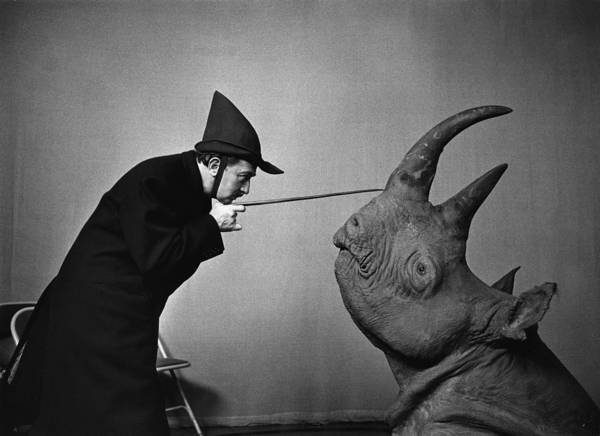In his Dictionnaire abrégé du surréalisme, André Breton defined Dalí as ‘the prince of Catalan intelligence’. Dalí was interested in all scientific disciplines including astrophysics, the theory of relativity, psychoanalysis and genetics, and even very complex contemporary hypotheses such as catastrophe theory and string theory. Dalí's wide-ranging curiosity put him in the mould of the great Renaissance Masters. Science fed his thought and enabled him to interpret the external world as well as his own psyche. It satisfied his fundamental need to check his personal irrational intuitions against the universe and its rules. By likening Time to a malleable material - a runny camembert - Dalí claimed the legacy of the great masters of the Past, while creating a projection or premonition of the Future.
From his student days, Dalí had been interested in astronomy, psychoanalysis, natural sciences, entomology and the theory of relativity. These subjects were available to him at the Residencia de estudiantes de Madrid, where the philosopher José Ortega y Gasset - who translated Freud, Einstein and Marinetti - organised lectures and meetings. At the beginning of the 1930s, the artist developed his famous paranoiac-critical method. This is heavily influenced by psychoanalytic theories, and would prove to have much in common with the young Jacques Lacan’s research into paranoia. From then on, Dalí envisaged creating closer links between art and science. The first nuclear tests, and the subsequent bombing of Hiroshima and Nagasaki in 1945, inspired him to take an interest in the atomic structure of matter. With his return to Catholicism, he created nuclear representations of figures from religious art, Christ and the Madonna.
Dalí was eager to meet scientists. He visited Freud in London in 1938, and later met Francis Crick in New York (Crick won the 1962 Nobel Prize with Watson for the discovery of the structure of DNA). He also met Dennis Gabor who won a Nobel prize for physics for his discovery of holography - a technique which was to occupy Dalí during the 1970s. Finally, he met René Thom, originator of catastrophe theory and Marcel Pagčs, who proposed antigravity theory. It was with Marcel Pagčs that Dalí visited Céret on 27 August 1965 for a bizarre day full of events that are extensively covered in the exhibition. In 1985, Dalí gathered together a learned assembly of world-reknowned scientists for a symposium entitled “Determinism and Freedom”, held at his museum in Figueres. In a fragile state since the death of his wife Gala, the Master followed the seminars by video link from his bedroom. This moving scene demonstrates that Dalí - who was terrified of death and promised himself physical immortality - had an insatiable thirst for knowledge and unstinting curiosity about science.
The exhibition is organised thematically, with each section covering a scientific discipline reinterpreted using Dalí’s paranoiac-critical method. This is an original approach to the works of this visionary artist. Science - and the exhibition at the Musée d’art moderne de Céret - proves Dalí right when he said, “There is only one difference between a madman and me. I am not mad.”
| 








